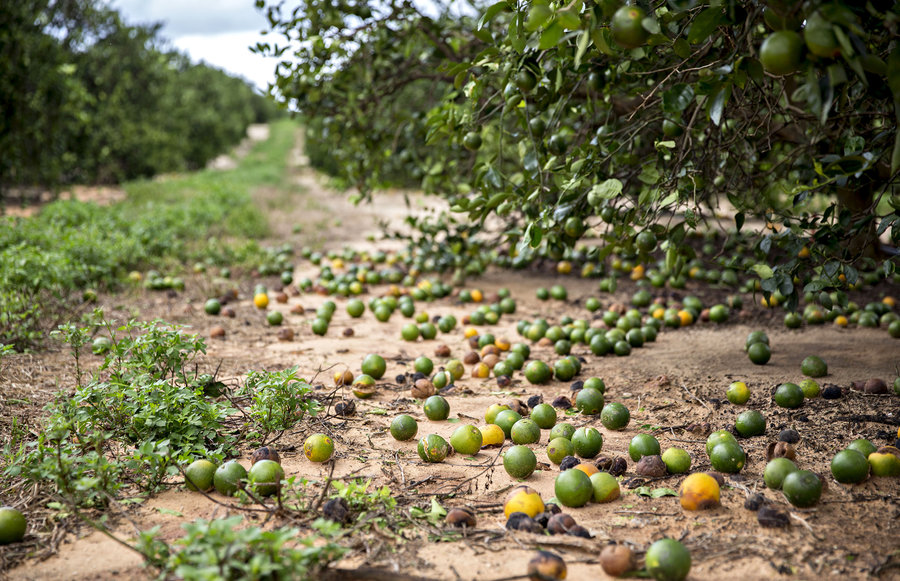
While unchanged from May, the latest and last forecast of the 2017-2018 orange growing season is a brutal reminder of Hurricane Irma’s devastation.
On Tuesday, the United States Department of Agriculture forecast Florida would produce 44.95 million boxes of oranges in total. That’s a continuation from May forecasts, which saw a slight dip from April.
But before Hurricane Irma, private estimates claimed Florida growers were on track to produce roughly 75 million boxes — or more than 30 million boxes than what’s currently projected by the USDA. Florida growers produced close to 69 million boxes of oranges during last year’s season after harvesting 81.7 million boxes during the 2015-2016 season. Each box weighs 90 pounds.
“This brings a very difficult citrus season to a close,” said Shannon Shepp, executive director of the Florida Department of Citrus. “We look forward to a quiet, resilient season in the fall.”
Grapefruit forecasts dropped to 3.88 million boxes — down 2 percent from May’s prediction. The USDA estimates tangerines and tangelos should be down 54 percent in total from last year’s growing season if forecasts hold steady.
When Irma swept through the state last year, authorities described the storm’s path as one that could not have been “more lethal” to Florida citrus. In October, the Florida Department of Agriculture and Consumer Services estimated the citrus industry suffered a $760 million blow.
The state’s citrus industry also has been hit by the citrus greening epidemic. The so-far incurable disease attacks the fruit, causing it to turn green and bitter, and eventually killing the tree. The epidemic has waned citrus production in recent decades, though farmers were on track to bounce back — until Irma.
Currently, Florida farmers await remedy at the federal level. Congressionally authorized funding spawned the creation of the USDA’s 2017 Wildfires and Hurricanes Indemnity Program (WHIP), which seeks to distribute $2.36 billion worth of federal funding to “agricultural producers to offset losses from hurricanes and wildfires during 2017,” according to the USDA.
The program will cover losses of crops, trees, bushes and vines for producers. Per the Florida Citrus Commission, Irma “uprooted trees and left many groves sitting in standing water for up to three weeks, potentially damaging the root systems and impacting future seasons’ growth.”
In discussing the final forecast of the season, Agriculture Commissioner Adam Putnam pointed to federal aid as the silver lining of Irma’s devastation.
“While today’s final citrus crop forecast brings this horrible season to a close, it’s important to remember that the industry is still recovering from Hurricane Irma’s unprecedented damage last year,” Putnam said. “Thanks to the collaborative efforts of the United States Department of Agriculture, Florida’s agriculture industry and our elected leaders, much-needed disaster assistance is on the way to help Florida’s growers.”
Additionally, the WHIP will distribute individual payments to farmers worth up to $125,000. But, per the USDA, “Producers who derived 75 percent of their income in tax years 2013, 2014 and 2015 will be subject to a $900,000 payment limitation.”
As well, producers who did not insure crops will receive 65 percent of their expected crop value if they are eligible for WHIP funding. Meanwhile, insured producers could receive up to 95 percent of their expected crop value.
Accompanying WHIP aid for Florida farmers is a $340 million block grant announced by USDA Secretary Sonny Perdue in May. That money will be used to cover the buying and replanting of trees, grove rehabilitation, and repairs to irrigation systems.
Florida leaders have pressured the USDA to disperse the WHIP funding sooner than later. The USDA expects to launch a sign-up period for the program no later than July 16.



